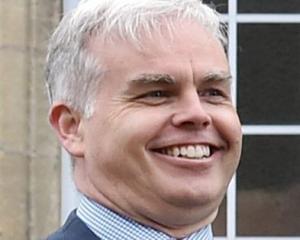The joint bid of Waikato University and Waikato District Health Board to establish the country’s third medical school is opposed by the University of Otago and University of Auckland medical schools.
The sides squared off in this month’s New Zealand Medical Journal. Today, Waikato District Health Board chief executive Dr Nigel Murray and Otago Medical School dean Prof Peter Crampton put their respective cases on the matter.

This is an important question. The focus of this third medical school discussion should be based on the national interest: what investment is needed to meet the medical workforce requirements of New Zealand's diverse rural and urban communities now and in the future?
Dr Nigel Murray makes assertions in his letter a third medical school is warranted because current medical programmes lack diversity of students and because they don't produce enough general practitioners. I dispute these claims. In 2016, the University of Otago graduated 45 Maori doctors, a percentage of graduates that matches the demography of New Zealand. This year we admitted 60 Maori medical students (21% of the domestic intake), 20 Pacific (7%), and 37 Asian students (13%). We have achieved this diversity through work over a long period of time, including outreach into high schools, a bridging programme, dedicated pathways of admission, and ongoing student support.
The University of Otago also annually admits at least 50 students preferentially on the basis of their rural background. Once here, students are offered a variety of rich and positive learning opportunities in rural and provincial communities. We know rural background and rural exposure mean students are more likely to want to work in rural areas, but by the same token we know that neither we nor rural communities can force them into rural jobs. The decision by graduates whether or not to work in a rural area is complex and takes into consideration many system-wide issues that need to be attractive to a newly graduated doctor (for example, career development opportunities, on-call requirements, annual leave etc).
We know as well that 25%-30% of our graduates favour general practice as their career choice, but a similar range of system-wide factors affect their eventual decisions, including the fact there are not enough general practitioner postgraduate training places for all these young doctors.
As stated in my editorial in the New Zealand Medical Journal, to which Dr Murray refers, the question of a third medical school carries with it many potential risks and benefits. One risk, for example, is that the number of medical students and doctors-in-training in New Zealand is already at the maximum level that can be accommodated by our health system without compromising the quality of their training; noting the very thing that holds our health system together is the quality of our health professionals.
As there is an absence of both a thorough and impartial analysis and wide consultation with the numerous stakeholders, it seems hasty to decide one way or the other on this question. We need first to undertake careful analysis and heed the views of the many individuals and organisations that have a vital interest in the complex issues that surround medical education and postgraduate career pathways.
First, let's have the consultation from which we can make an informed decision that best meets the needs of our diverse communities. A medical school is a major social investment that deserves a truly national approach.












